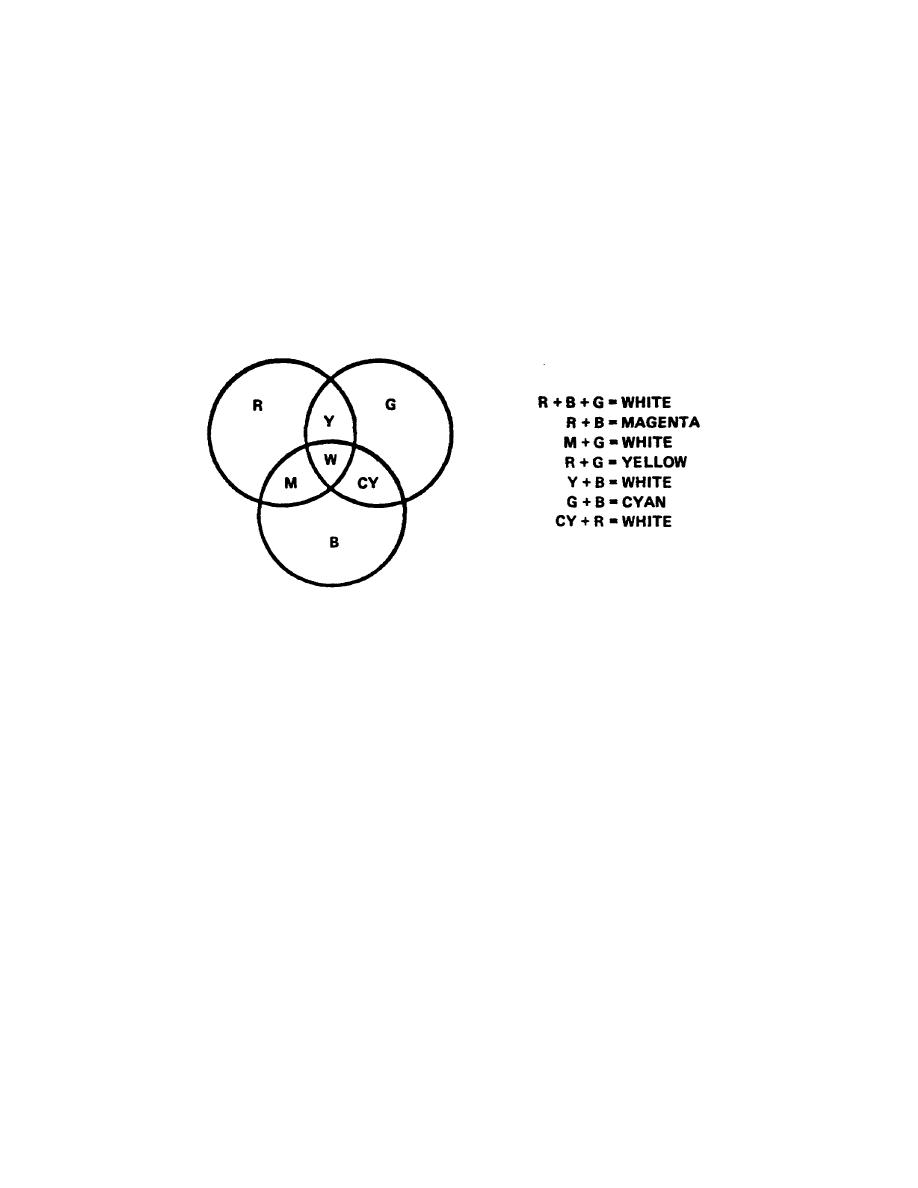
they fulfilled these requirements, and the greatest number of colors could be
matched by the combination of these three colors.
Three additive primaries are
combined in a definite proportion (fig 1-6). White has been produced through the
addition of all three primaries.
Red and green combine to make yellow.
The
combination of red and blue produces magenta (bluish-red), while blue and green
combine to make cyan (greenish-blue).
b. Yellow, magenta, and cyan are the secondary colors and are the complements of
blue, green, and red, respectively.
When a secondary color is combined with its
complementary primary, white is produced. For example, combining yellow with blue
produces white. Cyan added to red produces white and magenta plus green produces
white.
Carrying this one step further, the complementary colors when added
together produce white.
The expression circles in Figure 1-6 relate to color
mixing.
Figure 1-6.
The expression circles of color mixing
c. Since yellow + blue = white, and red + green = yellow, then red + green +
blue = white. Because the addition of the three primaries can produce white, the
addition of the correct proportions of the three complementaries which are made up
of the three primaries can also produce white. Therefore cyan + magenta + yellow =
white.
d. It is not necessary to overlap the primary colors in the additive process to
produce a different color. Two sources of color may be placed near each color, and
at a certain viewing distance the two colors will blend and produce the new color.
The eye actually performs the additive process.
The screen of a color kinescope
contains hundreds of thousands of phosphorous dots arranged in triangular patterns
(fig 1-7). Each dot is excited by its own electron beam. The cluster of dots will
emit a white light or any other color depending on the strength of the various
electron beams.
Due to the limits of vision of the human eyes and the process
discussed above, we are actually seeing an illusion when we watch our television
receiver.
7



 Previous Page
Previous Page
